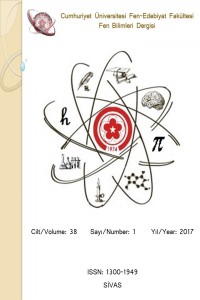Abstract
Özet. Köpük beton harcı akış özellikleri geneleneksel harçtan farklıdır. Akma dayanımı çok düşük olduğu için kendiliğinden akış özelliği gösterir. Köpük betonun akış özelliklerini belirleyen bir çok faktör vardır. Temel olarak; su/çimento oranı, su/ince malzeme oranı, çimento tipi, köpük ajanının tipi, köpük yoğunluğu, filler malzeme tipi ve miktarı, taze harcın yoğunluğu vb. Bu nedenle nihai beton ve köpük betonun reolojik özellikleri arasında bir yakınlık görülebilir. Köpük betonun bilinen reolojik özellikleri harcın işlenebilirliği, pompalanabilirliği ve kararsızlığı hakkında bilgiler verir. Köpük betonun reolojik özelliklerinin belirlenmesinde en önemli iki faktör olan fiziksel ve mekaniksel özellikler iki farklı yöntemle incelenmiştir. Bu akış özellikleri Marsh konisi yöntemi ve Barookfield viskozimetresi ile incelenmiştir.
Anahtar Kelimeler: Köpük beton, Reoloji, İşlenebilirlik, Viskozite, Marsh konisi
Abstract. The flow properties of foam concrete mortar are different from the traditional mortar. It is shows self flow properties for yield strength is very low. There are many factors that determine the flow properties of foam concrete. Basically they said; water/cement ratio, water /powder ratio, type of cement, the type of foaming agent, the foam density, the type filler material and amount of, the density of the fresh mortar, etc. Therefore can be established a close relationship between the rheological properties of foam concrete and the final concrete properties. To be known the rheological properties of foam concrete offers important information about the workability of mortar, pumpability and instability. Rheological properties of foam concrete have been investigated in two different methods as the most important factors that determine the physical and mechanical properties. This was investigated by flow properties Marsh cone method and Brookfield viscometer.
Keywords: Foam concrete, Rheology, Workability, Viscosity, Marsh Cone
Details
| Journal Section | Engineering Research Article |
|---|---|
| Authors | |
| Publication Date | February 16, 2017 |
| Published in Issue | Year 2017 Volume: 38 Issue: 1 |


